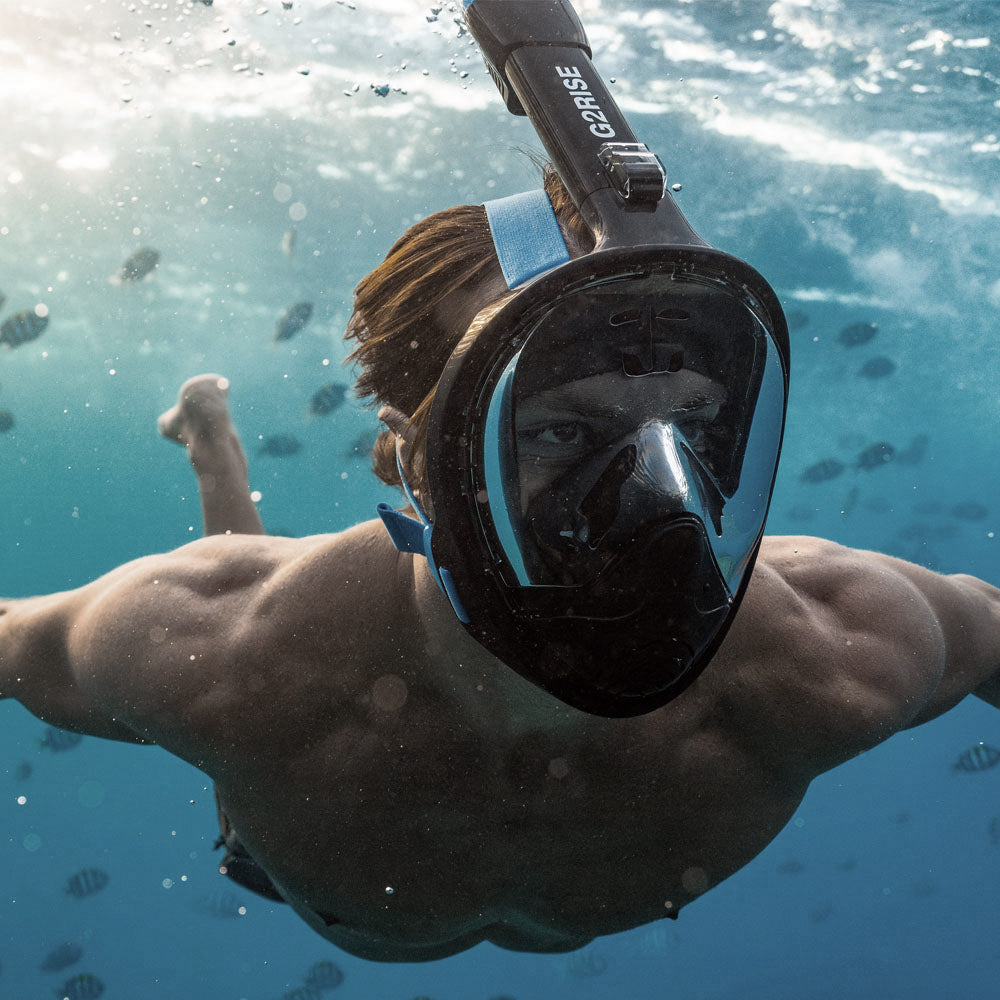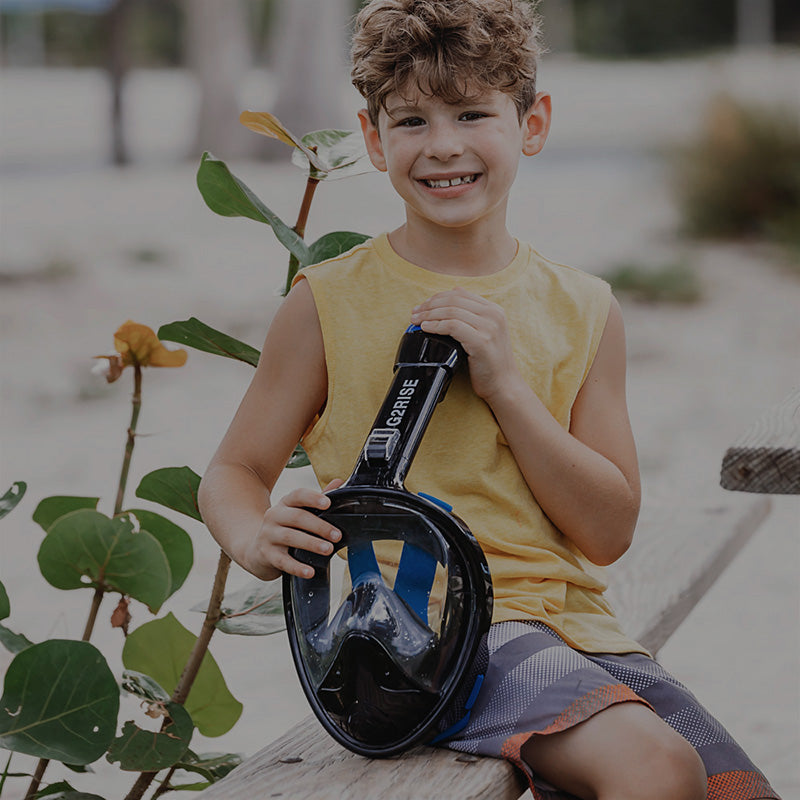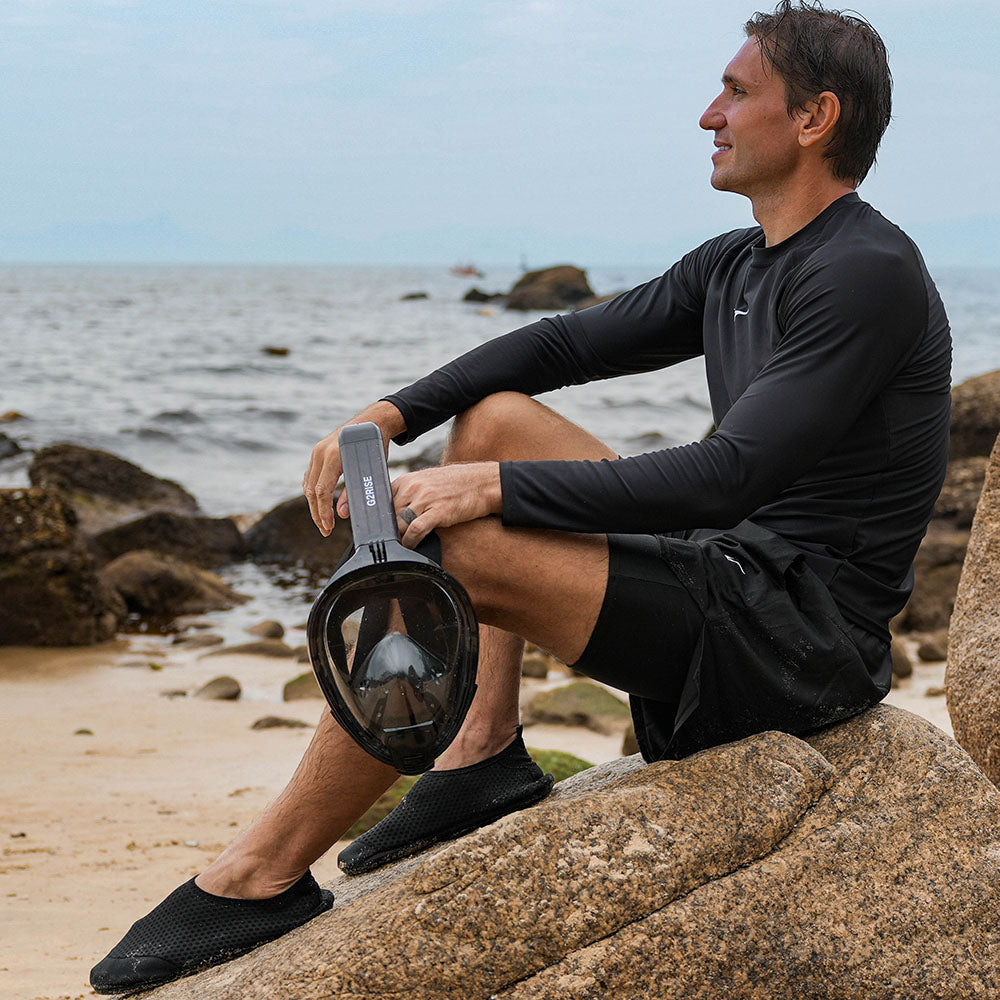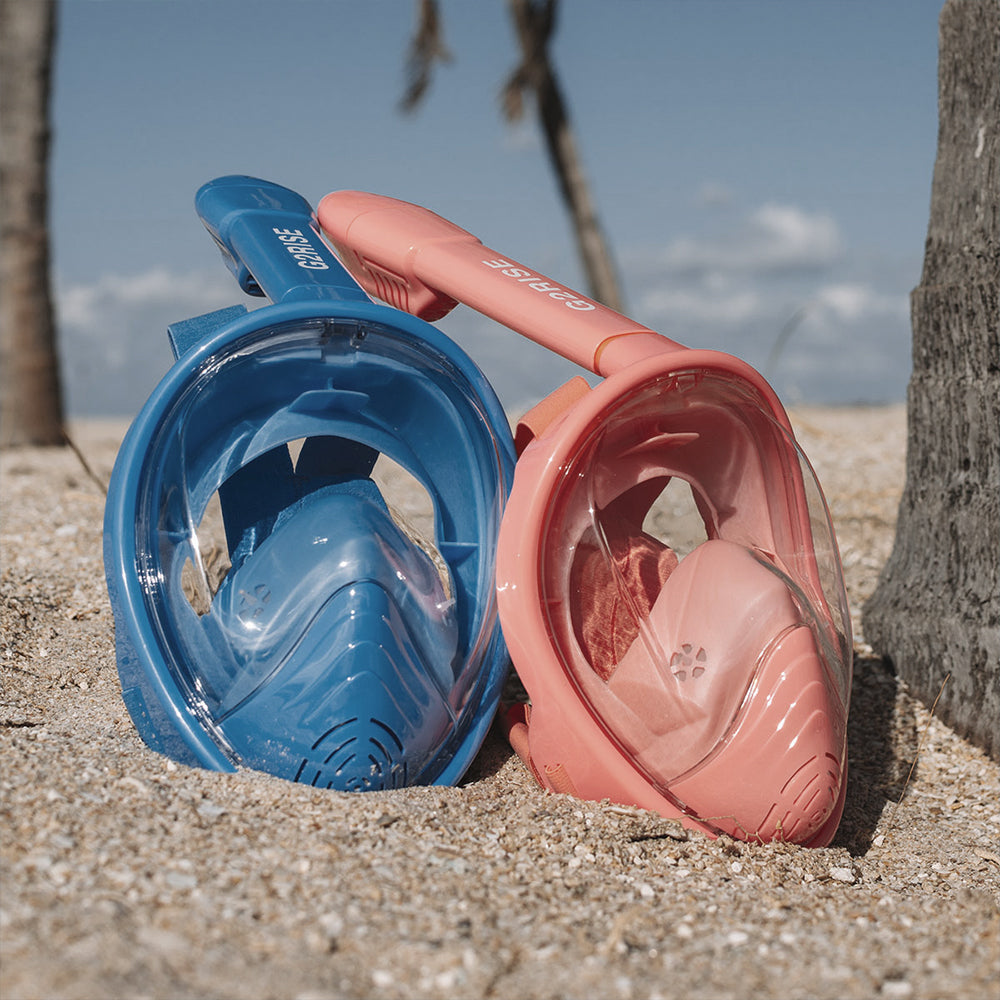Yes, you can breathe underwater with a snorkel mask, but only to a very limited extent. Snorkel masks allow you to breathe while your face is submerged just below the water's surface, typically to a depth of 30-40 cm where the top of the snorkel tube remains above water. However, you cannot breathe in deeper water where the snorkel tube is fully submerged.
At greater depths, water pressure makes it impossible to draw air through the tube, and the snorkel will fill with water. Modern full-face snorkel masks have improved this experience by allowing natural breathing through both nose and mouth, but they still have the same depth limitations. It's crucial to understand these constraints for safe snorkeling. Snorkel masks are designed for surface swimming and shallow water exploration, not for deep underwater breathing like scuba gear.
Snorkel Masks: How They're Made and How They Work
Snorkel masks are ingenious devices that allow swimmers to observe underwater life while breathing comfortably at the surface.
The Mask: Your Window to the Underwater World
The mask is the part that covers your eyes and nose. It has a hard outer shell, usually made of plastic, with a clear window to see through. The most important part of the mask is its soft edge that fits against your face. This edge keeps water out so you can see clearly. It also needs to be comfortable, as you might wear it for a long time.
The Snorkel Tube: Your Breathing Tube
The snorkel is a tube that lets you breathe while your face is in the water. It has a comfortable mouthpiece for breathing and a valve at the bottom to let water out if it gets in. The top of the snorkel helps keep water from waves out of the tube. Some newer snorkels have a special top that closes if you go underwater, keeping water out completely.
How Snorkel Masks Let You Breathe at the Surface
Snorkel masks work by keeping water away from your nose and mouth while letting you breathe air from above the water. The mask covers your eyes and nose, keeping them dry, while the snorkel tube sticks up out of the water. You breathe through your mouth, using the snorkel tube.
This setup lets you watch fish and coral for a long time without lifting your head to breathe. But snorkels only work when you're at the surface. They can't help you breathe if you swim deep underwater.
Operational Limits of Snorkel Masks
Snorkel masks can permit you to view things underwater; however, they do have some limits to their working ability. Therefore, to be safe with snorkel masks, you need to learn the dos and don'ts of them.
Breathing Depth Limit
Snorkels are short tubes extending up into the air about 30-40 cm above your mouth. You are able to breathe only when the top of the snorkel is above water. If you are swimming below that depth, you will no longer be able to use the snorkel for breathing. In fact, even if the top of the snorkel is only a little below water, you will also have a difficult time continuing to breathe through it. You must inhale stronger, like with a drinking straw, to pull air down through the tube. It will eventually tire you out.
Water Pressure Effects
If you go underwater, the water pushes on your body. This push increases with depth. It makes it harder for your lungs to fill with air. If you go too deep you won't be able to breathe in at all, even if your snorkel were long enough to reach to the air. The water pressure also pushes on the space inside of your mask. If you dive too deep this can hurt your face.
Air Quality Limits
When you are breathing through a snorkel, a part of the air in the tube is exhaled air, meaning it is the air you have already breathed out. This re-circulating air is low in oxygen. You would have to blow all the way out and make a deep inhalation to suck in fresh air. While this is ok when you are swimming at slow pace, it does get tricky when you're at full gait or if you're an amateur using a snorkel.
If you breathe too quickly through a snorkel, you may not exhaust all the old air. You can then feel dizzy or breathless.
The Truth About Breathing With Snorkels
A lot of people believe that snorkels can make them breathe underwater like fish. Well, that is just not true.
What Snorkels Really Do
These masks help you breathe only if you are swimming at the water's surface. They allow you to keep your face in the water while you are breathing air from above. Immediately when the top of the snorkel breaks below the water, your ability to have it work for you stops.
Why You Can't Breathe Underwater with a Snorkel
Water is a great deal heavier than air. If you attempt to breathe through a snorkel when you are under water, for example, water pressure is too great. Your lungs aren't strong enough to pull air down through the water. Instead, the snorkel just fills with water.
Even with a very long snorkel, reaching above the water, you could not breathe through it while being underwater, for it would be too hard to pull the air down the long tube.
Why This Matters
Knowing that snorkels don't work under water keeps you safe. Certain people might go in waters which are quite too deep, thinking the snorkel would still work. And this may be dangerous because an accident might occur.
Snorkels are great to observe the fish and coral of near-surface waters. To go down farther, however, different equipment is needed, such as scuba gear. Knowing what a snorkel can and cannot do increases your chances of enjoying the water safely and deriving more fun from snorkeling.
Enhanced Features in Modern Snorkel Masks
Modern snorkeling masks have new improvements regarding comfort and safety.
Full-Face Masks: A New Approach
Whereas the conventional masks only cover the eyes and nose, leaving the mouth to be covered by a separate mouthpiece for breathing, the full-face masks cover your entire face, integrating the snorkel into the mask design. The configuration offers one with an opportunity to breathe through the nose or mouth naturally.
Circulation Technology: Breathing Easier
Modern full-face masks boast complicated systems of air circulation. These circulate air much better than classic snorkels, meaning that breathing is less effortful with them.
The main advantages of such technology are:
- Enhanced comfort during extended snorkeling sessions
- Decreased likelihood of mask fogging
- Reduced fatigue from breathing resistance
CO2 Removal: Keeping the Air Fresh
The most valuable asset of a full-face mask is surely an improved way of removing carbon dioxide (CO2). Because of the specific chambers and venting systems, exhaled air is quickly siphoned off from the breathing zone. This construction diminishes the accumulation of CO2-a common problem when using traditional snorkels-that might make a person dizzy or irritated.
Water Entry Prevention
Full-face masks try to prevent water from entering the mask in many ways, including:
- Floating ball valves that seal the snorkel when submerged
- One-way purge valves for easy clearing of any water that does enter
- Improved sealing around the face to prevent leaks
These, among other features, enable the snorkeler to enjoy the scenery beneath them without the hassle of managing water in their mask or snorkel.
Limitations and Safety Considerations
While there are many advantages to this mask, there are also a number of limitations:
- Increased buoyancy can make diving below the surface more challenging
- Some models may be more difficult to remove quickly in emergencies
- Proper fit is crucial for effective functioning and safety
Full-face mask sizing is critical to both function and safety. Proper instruction on the use of full-face masks must be provided to, and practiced by, users in shallow water before proceeding to deeper water.
Safety Protocols for Snorkeling
Staying safe while snorkeling is very important. Here are some key things to know and do to keep yourself and others safe in the water.
Spotting Breathing Problems
Two primary breathing-related issues snorkelers might face are hypoxia (lack of oxygen) and hypercapnia (excess carbon dioxide). Knowing their signs can prevent dangerous situations.
Signs of Hypoxia:
- Rapid breathing
- Dizziness or lightheadedness
- Blue tinge to lips or skin
Signs of Hypercapnia:
- Headache
- Confusion
- Shortness of breath
What to Do in an Emergency
If something goes wrong while snorkeling, try to stay calm. Use hand signals or yell for help if you're at the surface. If your partner is in trouble, help them get to the surface if you can do it safely. Once you're at the surface, make sure you can float easily. If you know how, you might need to help your partner breathe.
The Buddy System: Your Underwater Safety Net
It's always safer to snorkel with someone else. Stay close enough to see each other. Check on your buddy often. Help each other if there's a problem with your gear or if someone gets in trouble.
It's good to know some hand signals for talking underwater. For example, making a circle with your thumb and finger means "OK". Waving your arm over your head means you need help.
Safe Snorkeling Tips
Before you get in the water, make sure all your snorkeling gear works well. When you're new to snorkeling, start in calm water that's not too deep. Don't touch fish, coral, or other sea life. Drink plenty of water and use sunscreen. Most importantly, know what you can handle and don't try to do too much.

Snorkel Smart, Stay Safe!
Snorkeling offers a window into the underwater world, but it requires knowledge and care. Snorkels work only at the surface, not in deep water. New mask designs improve comfort, yet have their own limitations. Safety is key: recognize breathing issues, know emergency steps, and always swim with a partner. Proper training enhances your skills and enjoyment. When you use your gear correctly and stick to safety guidelines, you'll have a better time exploring marine life. Get ready to experience the wonders beneath the waves - safely and confidently.











Leave a comment
This site is protected by hCaptcha and the hCaptcha Privacy Policy and Terms of Service apply.